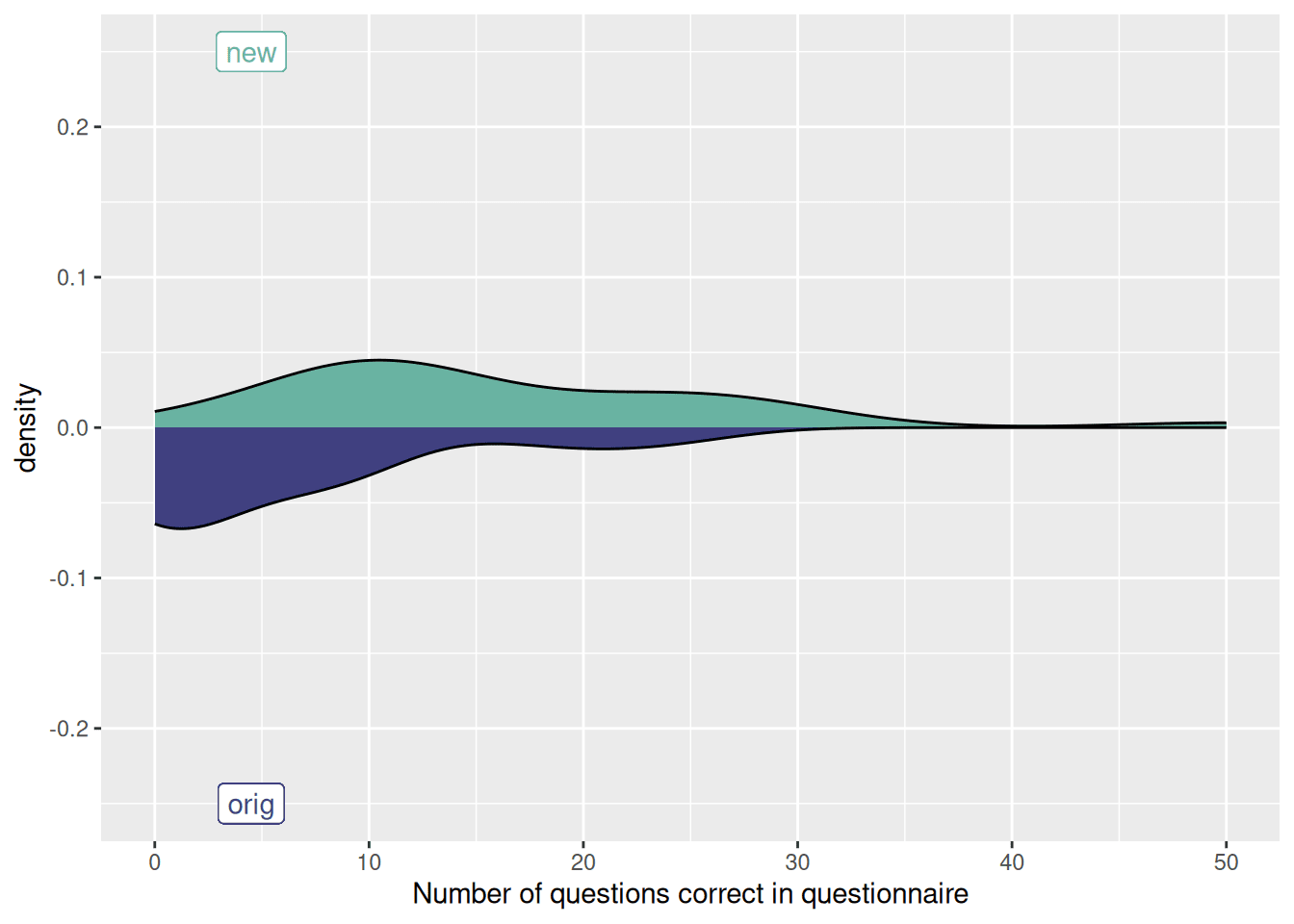
In today’s data-driven world, surveys are a pivotal tool for researchers, marketers, and decision-makers. They offer invaluable insights into consumer behavior, employee satisfaction, and wide-ranging social issues. However, the challenge often lies in harmonising data from multiple survey sources to draw coherent, actionable conclusions. This blog explores best practices for combining survey data, inspired by cutting-edge methodologies.
Creating a comprehensive harmonises data from multiple survey sources is both an art and a science. It involves integrating diverse data sets to present a unified understanding of your audience’s opinions, behaviors, and preferences. This endeavor, when executed effectively, can significantly enhance the quality and relevance of your data. In this guide, we’ll explore the best practices for combining multiple survey sources, drawing insights. It will highlights the significance of a strategic approach to multi-source data integration, emphasizing stakeholder perspectives and feedback loops for enriched decision-making.

Data harmonisation refers to the process of bringing together disparate data sources, standardizing variables and measures, to create a cohesive, comprehensive dataset that can be analysed as a whole. This practice is pivotal in overcoming the inherent limitations of single-source data, enabling researchers to address broader questions with higher degrees of accuracy and detail. However, it’s not without challenges—differences in survey design, data collection methodologies, and measurement scales can pose significant hurdles.

Before delving into best practices, it’s crucial to understand the landscape of survey data. With the proliferation of survey tools and platforms, organizations often collect data from multiple sources such as online surveys, in-person interviews, focus groups, and social media polls. While each source provides valuable information independently, combining data from these sources can offer a more comprehensive understanding of the target audience or market.
However, integrating data from disparate survey sources poses several challenges, including data inconsistency, duplication, and formatting issues. This article serves as a roadmap for seamlessly integrating and analysing data from multiple sources, ensuring coherence and accuracy in insights generation.
Before merging data from multiple surveys, it’s crucial to define clear objectives. What are you aiming to achieve? Are you looking to increase engagement, boost brand awareness, or drive conversions? Setting clear goals will guide the data integration process, ensuring that the combined data serves a specific purpose.
Combining data from different sources requires compatibility in terms of scale, measurement, and category definitions. Discrepancies in how data is collected and categorized can lead to misleading conclusions.
Source Evaluation: Assess the credibility and relevance of each data source. This involves looking at the survey’s publisher, its methodology, and the context in which it was collected.
Questionnaire Assessment: Compare questions for similarity in wording and context, ensuring that the data collected can be compared or combined accurately.
Sampling Methodology: Check if the sampling methods used in the surveys are compatible or understand how they differ, which can impact the representativeness of the data.
Standardize measurement scales Before integrating data, align the measurement scales used in different surveys to ensure comparability.
Use data transformation techniques Employ statistical methods to convert data into a common format, making integration possible without compromising data integrity.
Validate data accuracy: Test the integration process on a small subset of data to ensure accuracy before scaling up.

Integrating data from multiple sources requires careful planning and execution. The goal is to merge data without losing the integrity of individual datasets.
Not all survey data is created equal. Select sources that offer complementary insights into your audience. Consider the survey’s methodology, sample size, and the context in which the data was collected. Relevance to your objectives is key; data that closely aligns with your goals will contribute more significantly to your strategy.
The quality of your insights is directly tied to the quality of your data. Prioritizing data from reputable sources and employing rigorous data cleaning practices are essential steps.
Conduct thorough source vetting Evaluate the reliability and validity of each data source to ensure it meets the required standards of quality.
Implement data cleaning protocols Establish and follow strict data cleaning protocols to identify and correct inaccuracies, ensuring the data is clean and usable.
Perform consistency checks Regularly check data sets against each other to identify anomalies or inconsistencies, maintaining the integrity of the integrated data.
Leveraging advanced data integration techniques, such as data fusion and machine learning algorithms, can enhance the depth and breadth of insights derived from combined survey data.

Combining survey sources is fraught with challenges, from differing data quality to incompatible response scales. Addressing these issues head-on is key to successful data harmonisation.

Technology plays a crucial role in harmonising survey data. From data management software to advanced analytical tools, leveraging the right technology can streamline the harmonisation process.
Various technologies and tools can facilitate the integration and analysis of multi-source survey data. From data management platforms to advanced analytics and AI-driven insights, leveraging the right technology can enhance your ability to draw meaningful conclusions and implement a successful strategy.
The final step in combining survey sources is to translate the integrated insights into actionable strategies. This involves identifying key themes, preferences, and pain points of your target audience.
When combining data from multiple sources, it’s imperative to adhere to data privacy laws and ethical guidelines, ensuring that respondent confidentiality is maintained.
In addition to the best practices outlined earlier, here are some additional strategies to enhance the integration of survey data into your plan:
Conduct Rigorous Data Analysis: With the integrated data set, conduct a rigorous analysis to extract meaningful insights. Apply appropriate statistical methods and analytical tools that align with the objectives of your plan. This step is critical in transforming integrated data into actionable intelligence that can inform decisions.
Validate Findings Across Sources: Validate the findings of your integrated analysis by cross-checking them against individual data sources. This practice helps identify any inconsistencies and ensures that the insights generated are reliable and reflective of the data as a whole.
Develop a Narrative That Incorporates Diverse Insights: Craft a compelling narrative that weaves together the diverse insights derived from the integrated data. This narrative should highlight key findings, draw connections between different data sources, and articulate the implications for your data.
Integrating survey data effectively into a plan involves a series of strategic steps, from establishing clear objectives and ensuring data compatibility to leveraging advanced statistical methods and technology. By adhering to these best practices, organizations can enhance their strategies, drive engagement, and achieve their business goals.

Objective: A retail company aimed to understand consumer preferences and shopping behaviors across different demographics and regions to inform its marketing and product strategies.
Steps Taken:
Assess Compatibility: The company collected survey data from various sources, including customer satisfaction surveys, demographic surveys, and purchase behavior surveys. They assessed the compatibility of these datasets by examining factors such as survey methodology, sampling techniques, and question wording to ensure consistency.
Standardize Data: After assessing compatibility, the company standardized the data to facilitate integration. They harmonised variables such as age groups, income brackets, and product categories across different surveys to ensure uniformity in data representation.
Conduct Rigorous Data Analysis: With the integrated dataset, the company conducted rigorous data analysis to uncover market trends. They employed statistical techniques such as regression analysis, segmentation analysis, and trend analysis to identify patterns and correlations in the data.
Validate Findings: Findings from the integrated analysis were validated by comparing them against individual survey sources and external market research reports. Any discrepancies or outliers were investigated to ensure data accuracy and reliability.
Develop a Narrative: Based on the integrated survey data, the company developed a narrative that highlighted key market trends and consumer insights. This narrative addressed factors such as changing consumer preferences, emerging shopping trends, and regional variations in purchasing behavior.
Results:
This real-world example demonstrates how integrating survey data from multiple sources can provide valuable insights into retail market trends. By following best practices such as assessing compatibility, standardizing data, conducting rigorous analysis, validating findings, and developing a compelling narrative, retail companies can leverage integrated survey data to drive informed decision-making and gain a competitive edge in the market.
Integrating multiple survey sources to inform a plan requires meticulous planning, execution, and ongoing adaptation. By following these best practices, you can create a harmonious strategy that resonates with your audience, meets your objectives, and adapts to the changing digital landscape. Drawing on comprehensive analyses and stakeholder feedback, as suggested by our reference study, enriches your approach and ensures a robust, data-driven plan.
Remember, the integration of multi-source feedback is not just about data manipulation; it’s about crafting a narrative that aligns with your audience’s needs and preferences. By adopting a strategic, informed, and ethical approach to data integration, you can enhance your data’s relevance, engagement, and impact.
In the era of information overload, this article offers a strategic solution to harness the power of multiple survey sources. By following best practices such as clear objective setting, rigorous data standardization and transparent reporting can elevate their insights and deliver more impactful narratives.
Incorporating the lessons learned from the referenced study, this narration becomes not just a methodology but a commitment to providing a richer, more holistic understanding of the topics that matter. As the landscape continues to evolve, the harmony approach ensures that your insights resonate, creating a lasting impact on your audience.

